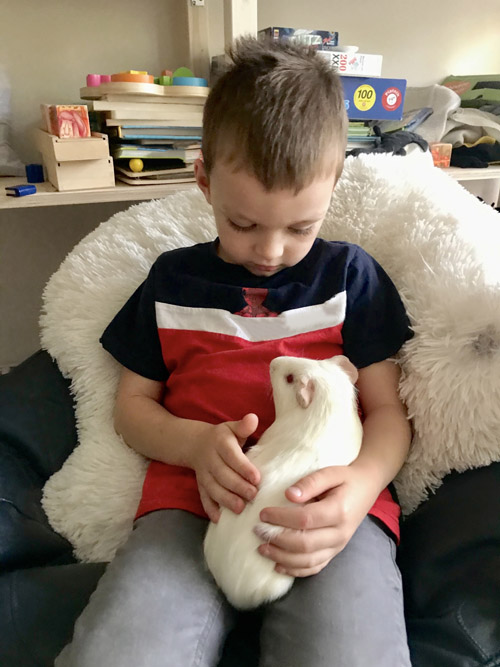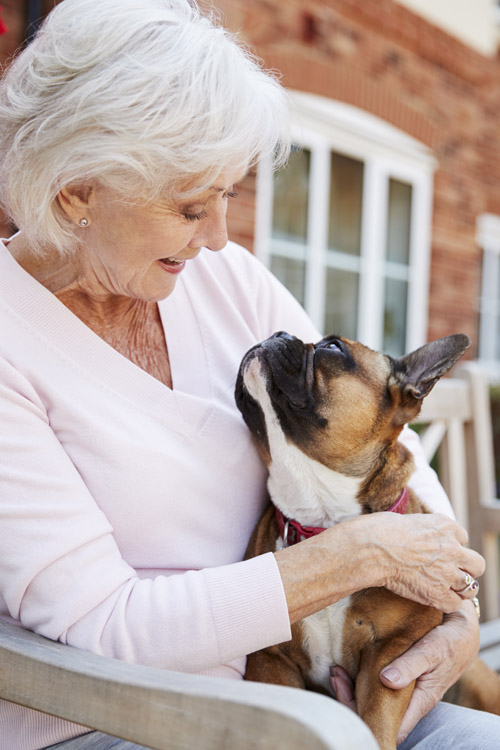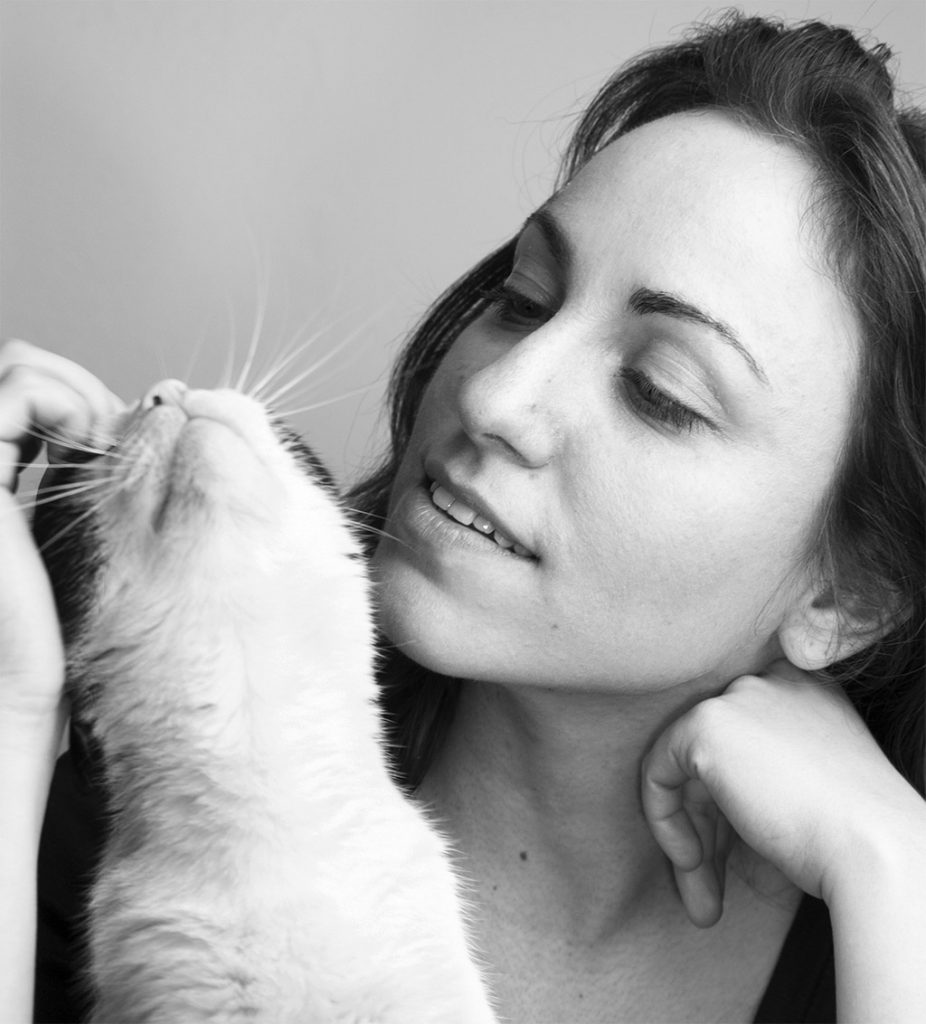Special Populations
grief can affect certain people more deeply
Children & Pet Loss
“There is only one smartest dog in the world and every child has it.”
Children’s experience of pet loss – and grief in general – has often been trivialized or given inadequate attention. As adults, we can be so involved with our own grief that we tend to lose perspective on how and why children grieve when they lose a pet. We want to protect them from pain and shelter them from life’s harsh realities.
If children are old enough to reason, they sense when they’re being left out of important discussions. The death of a child’s beloved pet matters a great deal to them. How you manage this will stay with your child for the rest of their life – and impact how they respond to later, inevitable losses.
The death of a family pet is often a child’s first experience of death. Children naturally develop strong attachments to companion animals, relating to them as siblings, friends, confidantes, and even protectors.
Children experience grief differently from adults. They need support and guidance to understand their loss, to mourn that loss, and to find ways to remember and memorialize their deceased pet.
Children look to us to guide them – in action as well as in words. The death of a beloved pet presents an emotional stress, even for a well-adjusted adult. If you are grieving the loss of a companion animal, it is important that you access bereavement support yourself so you can help your children deal with their grief. Try not to project your own concerns onto the child.

Age-Related Developmental Stages, Related to The Death Of A Pet
Children don’t respond to death in the same way adults do. Their normal reactions are much more natural, curious, and varied. How the child responds will depend on the strength of their bond with the pet, as well as the child’s age and developmental stage. Remember that as the parent you are the model for almost everything. The subject of death is not unknown to children, and they generally have a limited understanding. They watch movies and television, and they hear reports from schoolmates and friends. You may be surprised at how much your child does know.
2-3 Year Olds
Two to three-year old children are too young to understand what death really means. They may be told that the pet has died and will not return. Reassure them they didn’t do or say anything to cause the death.
Young children will sense and copy your emotions and behavior. While it’s good to cry and express your grief, try to exercise some control and make it clear this is a normal response to the loss of a loved one. Give your child extra reassurance and maintain their usual routines. At this age children will usually accept a new pet very easily.
4-6 Year Olds
Children in this age group usually have some understanding of death but they may not comprehend its permanence. They may think the pet is asleep or continuing to eat, breathe and play. They may feel they caused the pet’s death by being angry with them in the past or by being naughty.
Manifestations of grief may include bowel or bladder disturbances as well as changes in play, eating and sleeping habits. Frequent, brief discussions allow the child to express feelings and concerns. Give extra reassurance. Drawing pictures and writing stories about their pet may be helpful. Include the child in any funeral arrangements.
7-9 Year Olds
Children in this age group know that death is irreversible. They don’t normally think it will happen to them, but they may be concerned about the death of their parents. They will be curious and may ask questions that appear morbid. These questions are natural and it’s best to answer frankly and honestly.
At this age the child’s grief may manifest as school problems, anti-social behavior, physical changes, aggression, or withdrawal or clinging behavior. It is important to reassure them that they did not do or say anything that caused the death.
10-11 Year Olds
Children in this age group may be able to understand that death is natural, inevitable and happens to all living things. They often react to death in a manner very similar to adults, using their parent’s attitude as their model. A pet’s death can trigger memories of previous losses and you should be prepared to discuss them.
Adolescents
Adolescents react similarly to adults. However, typical adolescent grief can range from an apparent total lack of concern, to the hyper-emotional. One day they want to be treated like an adult, and the next day they need to be reassured like a much younger child. Peer approval is also very important. If they have the support of their friends, it’s much easier for them to deal with a loss.
An adolescent is trying to find their own true feelings and may be prone to conflict with a parent on how to express feelings and grief. It is important to avoid conflict.
Young Adults
Young adults can find the loss of a pet particularly difficult. They may feel guilty for abandoning their pet when they left home for college or university, work or marriage. They may have had a very close relationship with that pet since early childhood. Due to geographical distances, they are often unable to return to the family home to say goodbye to the pet or participate in family rituals associated with the loss.
Children see tears and grief, and they learn what bereavement means. Let them be exposed to this reality. Let them share your feelings according to their maturity and ability to understand. This will help them understand that grief is normal and acceptable. Teach them that ultimately, all life is change and growth. They need to understand that tears and hugs in a loving and understanding environment can help people get past the worst of the sadness. As life goes on, they will learn that time heals.
Questions Children May Ask
Children may ask many questions upon the death of a pet. This may include: Why did they die? Where did they go? Will we see them again? Are they with God? Can they hear us?
Answer all questions as honestly as you can. Young children in particular need only basic answers. Your responses should also be based on your own religious or philosophical views. It’s also okay to say that you really don’t have an answer. Share your own thoughts, feelings and beliefs. Let children know that it’s okay to ask questions and to cry. And it’s okay for you to cry with them. Tears can help ease the pain.
Involving Children In Memorializing Their Pets
Children, as well as adults, need distractions from fixating on the death of a pet. Below is a list of ways to creatively memorialize a beloved companion animal.
- Encourage children to express their grief by drawing pictures of their pet and sharing what the pictures mean to them. Listen to what they say and praise them for their thoughts. Let them keep the picture in their room if they want to – it may help them feel the pet is closer to them at bedtime.
- Make a scrapbook with photos and drawn pictures of the pet and the family. Write memories beneath. Include any funny memories as these can help develop happy associations each time the book is opened. Other small items such as a dog tag or small toy can be included, as well as sympathy cards and letters.
- If the pet has been cremated choose a special place in your home for the urn and a few pictures and mementos of the pet. Involve the children in these decisions.
- If you plan to scatter the ashes, let children be involved in the decision. It will be more meaningful if you do this somewhere your pet loved to be. Make sure the children feel that their thoughts and feelings are important to you.
- If a pet is to be buried, wrap the body in a shroud or casket made by a family member, if possible. This can create closer bonding with the parents and family.
- Planting a living memorial, such as a tree or bush in memory of a pet can feel healing. Making a small flower bed in a spot your pet loved can also be a memorial that brings some sense of closure.
- Some people practice a ritual of lighting candles on anniversaries when they reminisce about their life with their pets. This can bring a sense of comfort and respect. Let your children take part in this.
- Invite friends to talk about their own experiences with the pet. It’s usually a bittersweet time of laughing and crying but that’s part of the healing process. It’s good for children to learn about the joy their pets bring into other people’s lives. An exchange of memories helps to broaden their personal perspective of the human/animal bond.
- Placing a picture with a message to your pet on our website can also bring peace of mind and comfort to everyone in the family. It helps to bring resolution and acceptance that the pet is now a special memory. To place a memorial, click on the Join Us link and follow the instructions. Invite your children to help write the memorial.
Who Else Should Be Informed?
When a child loses a pet it’s important to let other caregivers such as day care providers and teachers know. They’re in an excellent position to observe and understand any significant changes in your child.
Your child may start daydreaming in class or at home. They may not do their homework and participate less in class. Their appetite and sleep habits may change, or they may become quiet or irritable. These are all signs that need to be addressed. Children can’t cope by themselves and need all the understanding and support available.
Sometimes, if asked, a teacher will schedule class time to talk about the loss of pets. The death of an animal companion is often children’s first real encounter with death. They need adult role models to learn appropriate responses. We can help them by coping with our own emotions around loss, death and dying. It’s never too late to develop skills and coping strategies. This will also help your child’s growing ability to deal with this kind of traumatic loss.
Children’s Books
There are many excellent illustrated children’s books about losing a pet. Reading them together will help both of you. There is a list of excellent titles on our Recommended Reading page.
‘The Loss of a Pet’ by Dr. Wallace Sife includes a chapter on “Children and Pet Loss.”

The Elderly and Pet Loss
Older pet owners, especially single people, are often emotionally dependent on their animal companions. This relationship is unchanging amidst physical changes such as reduced mobility, sight and hearing.
An animal companion prevents loneliness and provides respite from the mental and emotional changes that can accompany later years. When the animal itself is aged, or experiencing health problems, the senior will have added caretaking responsibilities. This can be hard for those who aren’t physically well themselves. However, providing loving care to their pet can make the elderly person feel needed and useful. If outside care is required for the pet, the owner may feel they are letting their dear friend down.
Seniors have usually lost many animal and human friends. The fact their animal is aging, or has recently died, is reason for deep grief and mourning. Clearly too, the senior recognizes their own time is coming to an end, and a loss can trigger fears about their own mortality.
Singles, Couples and Pet Loss
For those who don’t have children, animal companions can truly become their ‘fur babies’ and are mourned accordingly.




